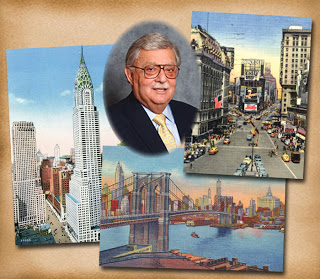
The main cities that had some collectors and some dealers to service them were New York, Boston, Philadelphia and Baltimore. Dealerships started and grew with the issuance of price lists and occasional auction sales. Some important clubs and societies were established, which attracted collectors to their meetings. However, there was very slow growth, and by the time of the Great Depression in the 1930s, growth of the hobby was at a snail’s pace.
With the price of gold advanced from $20.67 to $35 in 1933, a small industry started to grow. Gold coins received greater recognition and people sold them along with other gold items just to get by. There was always someone who would convert these items into cash. It was in this environment that the Stack family went strictly into the coin business leaving their other forms of business (including postage stamps, antiques, and other collectibles) behind. After all, it was the Depression, and there were no extra funds to help other collecting fields stay alive.
There seemed to be a concentration of dealers in the New York area. After all, the city was known for its jewelry trade and it was easy for dealers to move into coins (which were also precious metal) than some other field.
Around the country, some dealers were already in the field. Wayte Raymond, F.C.C. Boyd, McAllistar, John Zug, Tom Elder, Barney Bluestone, Henry Chapman, and David Proskey to mention a few, together with the great promoter and super-advertiser of the time, B. Max Mehl of Fort Worth, Texas.
Many of the dealers of the period lived and worked in New York and it was easy to see how these dealerships grew. New York offered a group of numismatic organizations including the most important, the American Numismatic Society. Also to be found were the New York Numismatic Club, the Bronx and Brooklyn numismatic clubs, and the Chase Money Museum, plus a number of other museums that included coins as part of their displays. All this attracted collectors to the city and it became a “hub” for numismatics.
Stack’s offered an atmosphere that attracted both small and large collectors to the first Stack’s offices at 690 Sixth Avenue, located near 23rd Street where commerce was growing quickly. The Stack family developed a different type of showcase for their coins. They introduced sit down counters, experts to guide collectors, and a numismatic library that could be used for learning more about coins. Soon other dealers opened offices in the vicinity of Stack’s, but most did not offer a walk in shop with a warm environment for collectors. Most were upstairs offices, generally small and not terribly inviting.
By 1942, with the subway being built on 6th Avenue, the Stack family moved its location to West 46th Street and within the next decade had created a new center for collectors. The shop and offices became a clubhouse for numismatists when they visited New York. By the time the firm moved to West 57th Street in 1953, they had around them a circle of dealers including Wayte Raymond, New Netherlands Coin Co. (with Charles Wormser, Moritz Wormser’s son, at the helm), Hans M.F. Schulman, Royal Athena Galleries, Max Kaplan, Tom Wass, and a little later, Lester Merkin. Before their move to California, Abe Kosoff and Abner Kreisberg and their Numismatic Gallery were also located nearby. These dealers set up in the vicinity, hoping to share in the attraction that Stack’s provided.
In addition, by 1953, the city boasted having at least a dozen active coin clubs, whose members included the “who’s who” of the time and whose collections were bought and sold in New York. The numismatic clubs of New York grew to such importance nationwide that they jointly created the New York Numismatic Convention, which was held annually for over a decade.
Many of the auctioneers who sold collections for clients chose New York as the place to sell. It was located in an area where many collectors lived and was easily reached from Boston, Hartford, the five New York boroughs, affluent Westchester County, Connecticut, New Jersey, Philadelphia, Washington DC, Baltimore, and all the other main collecting cities. During the Stack family’s tenure in the city they held over 800 public auctions there and attracted thousands of collectors.
Even now out of town dealerships want to establish themselves in New York, the natural center of numismatics. In recent years the well-known firm of Heritage Numismatics opened a shop just a few blocks away from the Stack’s “clubhouse.” They are not the first Texans to test their business in New York. In the 1930s B. Max Mehl came to New York to partner with Wayte Raymond, but found that the “Big City” was not for him and returned to Fort Worth, where he conducted mail bid auctions and, sadly, never returned to New York.
And now you know why New York is the “Coin Capital of the World”!





